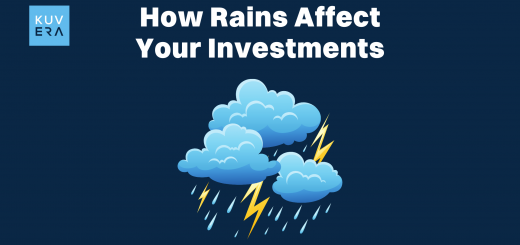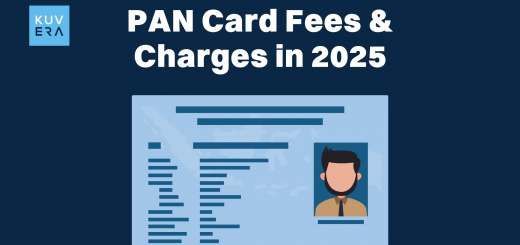Nirmala Sitharaman, the finance minister, announced in the Budget 2020 a new tax system with more tax slabs and lower tax rates. Most taxpayers wanted this for a long time, but it came with a catch: all the deductions and exemptions that were available under the old tax system were taken away. To make things even more confusing, the finance minister gave taxpayers a choice between the new system and the one that was already in place. It was up to them to choose which system they wanted to use. Because of all these things, tax laws have become more complicated instead of easier to understand.
And if you want to know how to figure out if you should choose the new tax system or the old one, this blog will tell you. We take a close look at the new system, its pros and cons, and how it differs from the current tax system. So let’s start.
Old Tax Regime
Under the previous taxation system, the assessee may claim deductions, exemptions, and allowances that enabled them to properly plan their taxes and save money. The old tax structure is complex. Despite the high tax rates, there are numerous ways to reduce your tax liability.
Through the addition of sections to the Income Tax Act over the years, the government has granted around 70 exclusions and deductions to Indian taxpayers, allowing them to reduce their taxable income and consequently pay less tax.
Some exemptions, such as the House Rent Allowance (HRA) and Leave Travel Allowance, are included in your income (LTA). The deductions permit you to reduce your tax liability by investing, saving, or spending on particular items.
Section 80C is the most popular and substantial deduction, allowing you to deduct up to Rs. 1.5 lakh from your taxable income. In addition to these exemptions and deductions, taxpayers have access to a number of others.
Deductions and Exemptions Under Old Tax Regime
Exemptions
- House Rent Allowance
- Leave Travel Allowance
- Mobile and Internet Reimbursement
- Food Coupons or Vouchers
- Company Leased Car
- Uniform Allowance
- Leave Encashment
Deduction
- Equity Linked Savings Scheme (ELSS)
- Employee Provident Fund
- Public Provident Fund
- Children Tuition Fees
- Health Insurance Premiums
- Investment in NPS
- Life Insurance Premium
- Principal and Interest Component of Home Loan
- Tuition Fee for Children
- Saving Account Interest
Pros Of Opting for the Old Tax Regime
- The previous tax system encouraged individuals to save for future events like marriage, schooling, and the purchase of a home. This was permitted under the previous tax regime because taxpayers were required to invest in particular tax-saving instruments.
- The old tax system instilled in individuals the habit of saving, which is extremely useful in times of emergency. With the advent of the new tax system, saving rates are likely to decline, as many individuals anticipate opting for the new tax system.
Cons Of Opting for the Old Tax Regime
- In the old tax system, individual taxpayers were eligible for tax incentives for a limited time. This term or restriction often lasted between three and five years. This tax-saving strategy may not be suitable for millennials, who like to pay first and then save. Also, senior citizens enjoy having cash on hand, which was not possible under the previous tax system.
- Under the previous tax structure, investors were unable to invest in assets with the potential to perform better. They were compelled to invest in the prescribed tax-saving instruments regardless of performance.
- In the old tax regime, documentation and extra verification of investments were required in the event of an assessment proceeding before tax authorities. However, in the new tax regime, these requirements have been eliminated.
New Tax Regime
There are six tax brackets, each with a reduced tax rate for incomes up to Rs. 15 lakhs. Due to various income brackets and tax rates, multiple exemptions and deductions are not available. There are pros and cons to the new tax system.
The new tax structure differs from its predecessor in two ways:
- The number of tax brackets has increased under the new system, with decreased rates in bands spanning up to Rs. 15 lakh.
- All exemptions and deductions utilized by taxpayers under the old system will be unavailable under the new system.
Key highlights of the new tax regime:
- All persons with incomes below Rs. 2,50,000 are exempt from paying income tax.
- Under the new tax regime, individuals earn between Rs. 2.5 lakhs and Rs. 5 lakhs must pay 5% tax on their total income.
- According to the new tax regime, individuals with a total income between Rs. 5 lakhs and Rs. 7.50 lakhs must pay 10% tax on their income.
- According to the new tax regime, those earning between 7.5 lakhs and 10 lakhs will be required to pay 15% tax on their total income.
- According to the new tax regime, those earning between 10 and 12.5 lakhs pay 20% of their total income in taxes.
- Individuals earning between 12.5 lakhs and 15 lakhs are required to pay 25% tax on their total income under the new tax regime.
- According to the new tax regime, persons with an annual income in excess of Rs. 15 lakhs pay 30% of their total income in taxes.
Before opting for the new tax regime, individuals must do a detailed comparison of the old and new tax regimes based on the aforementioned tax brackets. Numerous aspects, which will be discussed below, shed light on the distinct benefits of both tax regimes.
Features Of New Tax Regime
- Lower Tax Rates
The new tax regime has expanded the scope of tax arbitrage by instituting seven tax brackets with tax rates ranging from 0% to 30%, with the highest tax rate applied to incomes above INR 15 lakh. In contrast to the current regime, the former regime had four tax brackets ranging from 0% to 30%, with the highest rate applicable to incomes exceeding INR 10 lakh.
- Deduction and Exemption
The government is aware that the Act’s numerous exemptions and deductions make compliance by taxpayers and implementation of tax rules by tax authorities arduous.
To provide relief to taxpayers, the simplified tax rate system necessitates foregoing certain tax deductions and exemptions. Therefore, it is essential to compare the impact of claimed deductions/exemptions against the advantage of lower tax rates. Among the popular tax exemptions and deductions that are no longer permitted under the new tax regime are:
- Leave Travel allowance
- House Rent allowance
- Children Education Allowance
- Standard deduction on Salary
- Deduction for Professional tax
- Interest On Housing Loan
- Deduction under Section 80C of the Income Tax Act
Pros Of Opting for the New Tax Regime
- The new tax system lowers tax rates. Although the new tax regime features lower tax rates, the majority of deductions and exemptions that were previously accessible are no longer available. With the advent of the new tax regime, individuals are required to fill out less paperwork, and the tax filing procedure has been simplified.
- With the implementation of the new tax system, liquidity will improve, and reduced tax rates will provide individual taxpayers with greater disposable money. This would be advantageous for individuals who were previously unable to invest in particular instruments owing to financial constraints.
- The new tax structure provides greater investment customization options. As stated in the regulation, taxpayers will only be eligible for deductions if they invest in one of the specified instruments. This will limit the investment options available to taxpayers, but will also offer them a great deal of freedom to tailor their investment decisions.
Cons Of Opting for the New Tax Regime
With the implementation of the new tax system, several deductions are no longer available to taxpayers, including those listed below:
- Deductions for travel time off.
- Deductions for rent allowances on the home.
- Numerous special allowances, including the education allowance for children, the hostel allowance, and the uniform allowance, will no longer be subject to deductions.
- No deductions are made from MP/MLA allowances.
- No deductions would be allowed for deductions under sections 35AD or 35CCC.
- Subtractions under the family pension plan.
Income Tax Slab Rates Under Both Regimes
| Income Tax Slab (Rs) |
Old Tax Rates |
New Tax Rates |
| 0 – 2,50,000 |
0% |
0% |
| 2,50,000 – 5,00,000 |
5% |
5% |
|
5,00,000 – 7,50,000 |
20% |
10% |
|
7,50,000 – 10,00,000 |
20% |
15% |
| 10,00,000 – 12,50,000 |
30% |
20% |
| 12,50,000 – 15,00,000 | 30% | 25% |
| 15,00,000 & above | 30% | 30% |
Old vs New Tax Regime – Which is Better?
On the basis of the following factors, one can choose the most appropriate tax regime:
- If you are searching for freedom in your investments but do not wish to invest in the specified instruments, the new tax system is ideal for you. Before making a selection, it is advisable to conduct a thorough review of both tax regimes and the best available alternatives.
- It is also important to remember that you can change your selection annually. You can now select a tax regime from the old or the new based on your preferences.
- Please note that this only applies to individual taxpayers and not to those with business or other professional income. In light of the fact that these individuals would only have one opportunity to select between the two regimes during their entire lives, this must be determined through exhaustive research. The only time they can convert to the other tax regime is when their business ceases to exist.
- With the implementation of the new tax regime, the department of income tax has developed a web-based tax comparison tool. Individual taxpayers can visit the website and base their judgments on a comparison of the two tax systems.
- In the new tax system, the paperwork procedure is streamlined, which expedites the filing of tax returns. Individuals have easy access but are prohibited from the majority of exemptions and deductions.
- Individuals who can take advantage of additional tax deductions and exemptions under the previous tax regime should continue to do so because it may be more favourable for them.
Illustration on Income Tax Calculation (Old vs New Tax Regime)
- Rs 10,00,000 annual income without exemption
|
Old Tax Regime |
New Tax Regime |
|||
| Income Tax Slab |
Tax Rate (%) |
Tax (INR) | Tax Rate (%) |
Tax Rate (INR) |
| Up to Rs 2,50,000 |
0 |
0 | 0 |
0 |
| 2,50,001- 5,00,000 |
5 |
12,500 | 5 |
12,500 |
| 5,00,000 – 7,50,000 |
20 |
50,000 | 10 |
25,000 |
| 7,50,001 – 10,00,000 |
20 |
50,000 | 15 |
37,500 |
| SUM |
1,12,500 |
75,000 |
||
| Health & Education Cess |
4 |
4,500 | 4 |
3,000 |
| Tax Payable |
|
1,17,000 |
78,000 |
|
- 10,00,000 annual income with exemption
| Annual Income |
10,00,000 |
| Exemption u/s 80C |
-1,50,000 |
| u/s 80CCD(1B) |
-50,000 |
| u/s 80D |
-75,000 |
| Taxable Income |
7,25,000 |
|
Old Tax Regime |
New Tax Regime |
|||
| Income Tax Slab |
Tax rate |
Tax (INR) | Tax Rate |
Tax Rate (INR) |
| Up to Rs 2,50,000 |
0 |
0 | 0 |
0 |
| 2,50,000 – 5,00,000 |
5 |
12,500 | 5 |
12,500 |
| 5,00,000 – 7,50,000 |
20 |
50,000 | 10 |
25,000 |
| 7,50,001 – 10,00,000 |
0 |
0 | 15 |
37,500 |
| Sum |
62,500 |
75,000 |
||
| Health and education cess |
4 |
2,500 | 4 |
3,000 |
| Tax Payable |
65,000 |
78,000 |
||
Conclusion
Both systems have their own advantages and disadvantages. The old system contained several exemptions and deductions under numerous sections; in order to take advantage of a few of these, individuals were obliged to participate in tax-saving investment alternatives, which fostered a habit of saving.
On the other hand, the new system provides individuals with greater flexibility and attempts to streamline the process. It also fluctuates according to whatever slab you are in. However, due to the system’s novelty, it is prudent to speak with a qualified tax specialist who can advise you on the ideal tax-saving strategy.
In recent years, the government has taken various measures to simplify the tax system. India still has one of the highest tax rates applicable to individual taxpayers, considering the peak rate of 30% and the peak surcharge on a tax of 37% on incomes above INR 5 crore. Once the government contemplates further extending the tax brackets to counteract the impact of eliminating particular deductions or exemptions, there is space to make the new tax regime more attractive to a wider proportion of individual taxpayers.
To ensure that you make the correct selection, it is equally important to gain a thorough understanding of both tax systems and to keep abreast of any changes suggested by the government.
FAQs
-
Is it mandatory to file ITR for an individual earning less than Rs 2.5 Lacs annually?
If your annual income is less than Rs. 2.5 lakh, you don’t need to file an ITR. However, you should file a “Nil Return” only for the record because you may need to show it in various situations as proof of your employment. For instance, while applying for a loan or passport, it would be mandatory to present your ITR.
-
Can I change the Income Tax regime for my tax return?
Yes, depending on your preferences, you can opt to file your income tax returns under the old regime or the new regime.
Start investing through a platform that brings goal planning and investing to your fingertips. Visit Kuvera.in to discover Direct Plans and Fixed Deposits and start investing today.
#MutualFundSahiHai #KuveraSabseSahiHai!
Interested in how we think about the markets?
Read more: Zen And The Art Of Investing
Watch/hear on YouTube:
Start investing through a platform that brings goal planning and investing to your fingertips. Visit Kuvera.in to discover Direct Plans and Fixed Deposits and start investing today.#MutualFundSahiHai #KuveraSabseSahiHai!











